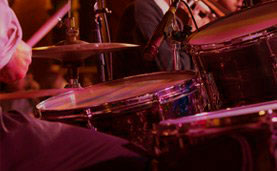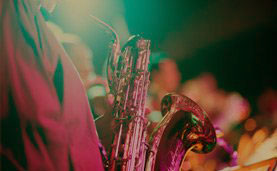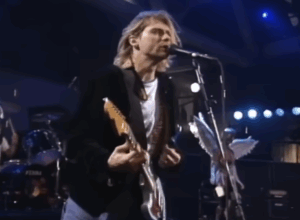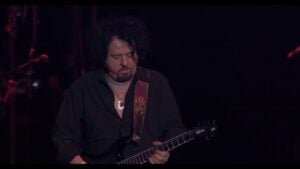‘Physical Graffiti’ Is Undeniably Led Zeppelin’s Most Iconic Album – Here’s Why
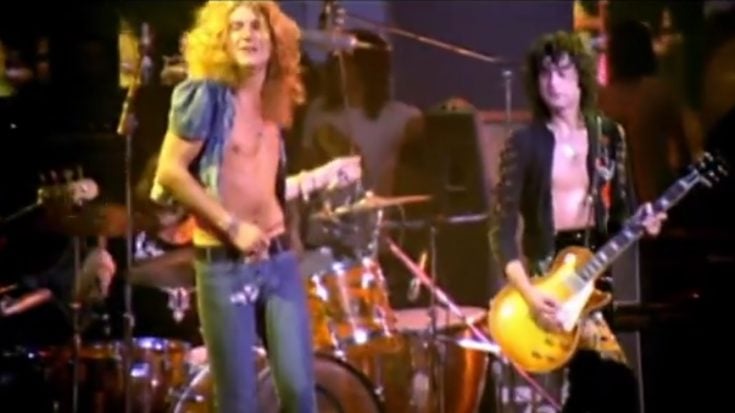
Led Zeppelin live in 1973 - Led Zeppelin Concert Footage / Youtube
Few rock bands in history have achieved the mythical status of Led Zeppelin. From their blues-infused beginnings to their later genre-defying compositions, the band continuously pushed the boundaries of rock music. While albums like Led Zeppelin II and Led Zeppelin IV are often hailed as their most essential works, one album stands above them all as the definitive Zeppelin experience—Physical Graffiti.
Released as a double LP, Physical Graffiti isn’t just an album; it’s a sprawling statement of everything Led Zeppelin represented. It captures the band’s raw power, their willingness to experiment, and their ability to craft songs that feel both epic and deeply personal. It’s a record where blistering rock tracks sit alongside intricate ballads, and where bluesy swagger meets orchestral grandeur.
With its diverse sound, bold ambition, and some of Zeppelin’s most iconic songs—including “Kashmir”, arguably their greatest masterpiece—Physical Graffiti is the album that best defines who Led Zeppelin was. Here’s why it remains their most iconic work and a true landmark in rock history.
The Ultimate Showcase of Led Zeppelin’s Musical Mastery
Led Zeppelin was never a band that played it safe. They thrived on pushing the limits of rock music, weaving together elements of hard rock, blues, folk, funk, and even orchestral compositions. Physical Graffiti embodies this artistic ambition, standing as a testament to the band’s boundless creativity.
From the crunching riffs of “The Rover” to the pulsating funk of “Trampled Under Foot”, the album offers a dynamic range of sounds that capture the essence of Zeppelin. It also showcases their ability to reinterpret blues music in a way that felt uniquely their own, as demonstrated in “Custard Pie” and the hauntingly intense “In My Time of Dying”.
This double album wasn’t just a collection of songs—it was an artistic statement. Led Zeppelin took the risks that many bands wouldn’t dare to, proving that their sound could be both wildly experimental and commercially successful.
https://twitter.com/RollingStone/status/1894100566361407895
The Perfect Balance of Power and Melody
One of the greatest strengths of Physical Graffiti is its ability to strike a perfect balance between raw rock energy and melodic sophistication. While tracks like “The Wanton Song” and “Sick Again” display the band’s signature hard-hitting, riff-heavy style, songs like “Houses of the Holy” and “Down by the Seaside” reveal their knack for crafting melodies that resonate deeply with listeners.
This balance extends to Robert Plant’s vocals, which alternate between primal howls and soulful crooning. Whether he’s delivering passionate blues storytelling or weaving poetic lyrics into soaring melodies, his performance on Physical Graffiti is one of his most captivating.
Meanwhile, the rhythm section of John Paul Jones and John Bonham drives the album’s momentum, adding depth and groove that elevate each track. From Jones’ hypnotic clavinet riff on “Trampled Under Foot” to Bonham’s thunderous drumming on “In My Time of Dying”, their contributions make this album a masterclass in rock musicianship.
“Kashmir” – The Defining Zeppelin Anthem
If one song encapsulates the grand, larger-than-life essence of Led Zeppelin, it’s “Kashmir”. This monumental track is more than just a song—it’s an experience. With Jimmy Page’s hypnotic, droning riff, sweeping orchestration, and shifting rhythmic structures, “Kashmir” remains one of the most ambitious compositions in rock history.
The song’s mysterious, cinematic quality has made it a cultural phenomenon, appearing in films, television, and even being sampled in hip-hop. It’s a track that transcends genres and generations, proving that Zeppelin’s music wasn’t just influential in the ‘70s—it remains legendary to this day.
With “Kashmir” at its heart, Physical Graffiti cements its status as the quintessential Zeppelin album. It represents everything that made the band great: power, depth, innovation, and a sense of mystique that no other rock band has quite matched.


